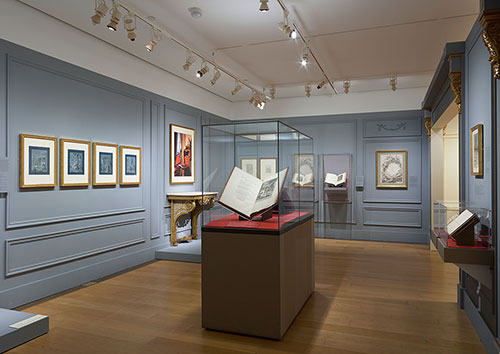The eighteenth century was a high point in French book production, elevated by tastes and trends in printed illustration. Through the literary text, engraved illustrations, and luxury binding, a book provided its owner with three degrees of cultural prestige. The collaboration of highly trained illustrators, painters, and engravers made this an exceptional period for the visual interpretation of the literary imagination.
Engraving is an intaglio printing process in which lines incised on a metal plate are filled with ink and then impressed on paper, transferring the design. The intensity of the printed line depends on the thickness or depth of the incised groove, and in this way the engraving process is closest to drawing. Practiced in Europe since the fifteenth century, engraving was developed to an exceptional standard during the eighteenth century. The subtle shading and textures in drawings by artists like François Boucher and Jean-Baptiste Oudry could now be reproduced by skilled engravers, such as Charles-Nicolas Cochin (father and son). volumes were devoted solely to engraved illustrations recording and promoting French architecture, contemporary fashion, and court spectacle.

